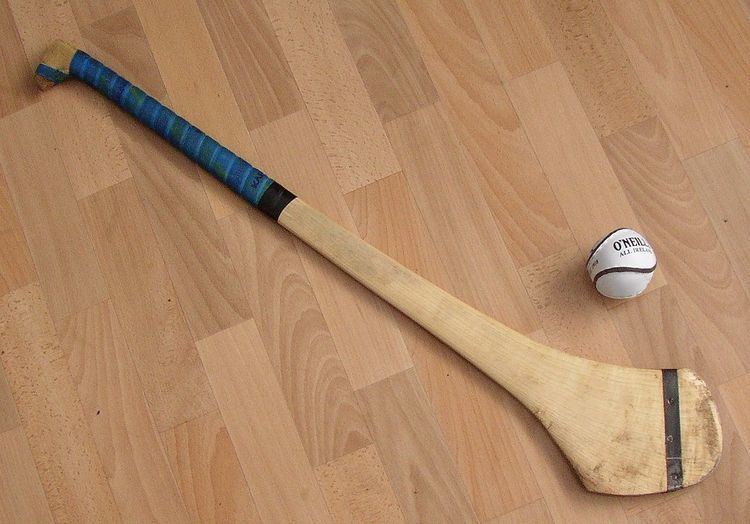 | ||
A sliotar or sliothar ([ʃlʲɪt̪ˠəɾˠ]) is a hard solid sphere slightly larger than a tennis ball, consisting of a cork core covered by two pieces of leather stitched together. Sometimes called a "dust" or "hurling ball", it resembles a baseball with more pronounced stitching. It is used in the Gaelic games of hurling, camogie, and rounders.
Contents
Dimensions
An official Gaelic Athletic Association (GAA) sliotar, as used in top level hurling competitions such as the National Hurling League or the All-Ireland Senior Hurling Championships is subject to strict regulations as regards its size, mass and composition.
The following regulations apply:
Approved sliotars carry a GAA mark of approval. The GAA maintains a list of approved suppliers, based on manufacturers who pass their inspection. Women used to make sliotars for their sweethearts out of horsehair in the 19th century just in time for the May Day Contest.
History
Early (pre-GAA) sliotars used various materials, depending on the part of the country, including combinations of wood, leather, rope and animal hair and even hollow bronze.
In the early years of the GAA, there was no specific standard for the size or weight of sliotars. The man credited with initial standardisation of the sliotar is Ned Treston (1862–1949) of Gort, County Galway. He was selected to play in a match between South Galway and North Tipperary in February 1886 in Dublin. Prior the game, there was debate between the teams as regards the size of the sliotar. Treston made a sliotar at a nearby saddler, which was used in the game, and went on to be a prototype for the standard sliotar used from then on.
Johnny McAuliffe (born 1896, Bruff, County Limerick) is credited with the modern design. Before his improvements the ball tended to be inconsistent due to poor manufacturing. It was also heavier than modern sliotars (over 200g), and due to being made partly with horse-hair, tended to lose shape during play, and become soggy in wet conditions. The brown colour also meant that players tended to lose sight of the sliotar against crowded backdrops such as the crowd in Croke Park.
McAuliffe's changes were to introduce a cork core, with a 2 piece white-tanned leather covering as the standard materials. These changes led to a harder wearing ball, which had better visibility (the white-tanned pigskin was impervious to grass stains and water resistant). The construction materials also meant that the ball was only about half as heavy as Treston's version.
In the early 2000s, the GAA experimented with using sliotars with rubber rather than cork cores, however, it was found that using a rubber core led to a more unpredictable bounce, and moved a lot faster than a ball with a cork core, especially in wet conditions. It was decided to return to a cork ball in light of this.
